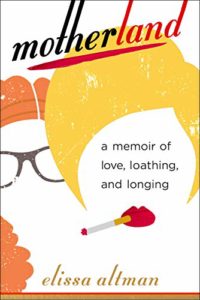
It happens to all cooks when they merge two households: they wind up with doubles of everything. Two cheese graters. Two food processors. Two blenders. Two ten inch chef’s knives. Two copies of The Joy of Cooking. Two of everything, unless you’re my father and stepmother: when they merged their households, they wound up with twelve basket steamers–the totally annoying and mostly useless kind that fold closed and that are always breaking. How do I know they had twelve: when I helped them move, I counted them.
What We Bring to the Kitchen
When I moved to Connecticut almost ten years ago, I was coming from a sizable studio apartment in Manhattan, where space was precious; I had one floor-to-ceiling bookcase housing my favorites of the sacred volumes that I’d managed to hoard in fifteen years as an editor. My more frequently-used cookbooks–Diana Kennedy’s first book on Mexican cooking, the first Union Square Cafe cookbook, Edna Lewis’s The Taste of Country Cooking, and Mastering the Art of French Cooking — sat on a small oak table in my 7 foot square kitchen, where I regularly cooked dinners on my 24 inch apartment stove. The Mauviel copper cookware that I’d collected while working at Dean & Deluca sat on top of the kitchen cabinets, unused for almost 9 years. My everyday cooking was done in one white 5 quart Le Creuset round pot (purchased with the sole intent of making Cassoulet) and two smallish cast iron pans. I had a small stick proof pan in which I reheated leftover pasta and Chinese food. I had the three required knives that my mother bought me when I went to cooking school. That was pretty much it.
So when I arrived at Susan’s house in Harwinton, Connecticut, I was astonished at the mounds of cookware she’d managed to squeeze into her gigantic 12 foot square kitchen (it was a tiny house): still, the only place we really overlapped was in can openers, microwaves, food processors, and cast iron (mine immediately was banished to the basement, because hers were 1930s Griswolds in perfect condition). Most importantly, our book collection didn’t overlap much; on a small shelf over the kitchen sink she had the peculiar combination of whimsy and function: Patio Daddy-o (a kitschily illustrated collection of spectacular 1960s American recipes), Maida Heatter‘s dessert book, Larousse Gastronomique (a very old copy), and one jacketless, unidentifiable volume that was cracked down the spine from overuse.
“If I had to have one cookbook–only one–this would be it,” she said, taking it down gently to show me, proudly.
“You’re treating it like The Gutenberg Bible, you know,” I said, rolling my eyes.
It was The Doubleday Cookbook by Jean Anderson and Elaine Hanna–a splattered and stained edition from around 1975 that Susan had picked up at a used bookstore. Whenever Susan cooked anything–really, absolutely anything–it was this book that she turned to. Sure, she had The Joy of Cooking (so did I) and neither of us ever (ever) used it; we both had Mastering, but who can cook from that book so regularly (Julie Powell not withstanding)? But it was The Doubleday that was the cornerstone of her kitchen, and by extension, mine. I had never cooked from a book where literally every single recipe I made out of it came out so perfectly; I had never cooked from a book that offered cooking times with such frighteningly remarkable precision. Usually when I cooked at home for myself in my little apartment, I did so by feel and generally resisted any hard and fast instruction. But after a year of living and cooking in Susan’s kitchen, if Jean Anderson was going to tell me to roast my five pound standing rump for exactly 23 minutes per pound for medium rare, by god, I was going to do it. There are few cookbooks that have that effect on me, but Jean Anderson’s does.
Beyond that, if I have a hankering to cook Goose Braised with Onions, Hangtown Fry, Taramasalata, Guinea Fowl, Kedgeree, Roast Beef, or Spitzbuben out of a single book, this would be the one.
One chilly Fall day after we moved from Harwinton, Susan and I found ourselves sitting on our back deck perusing a stack of cookbooks. As always, her slightly decrepit copy of The Doubleday was there among the glitzier ones written by famous chefs with television shows. We were planning on making soup, so we were poking around for a great recipe that was also inexpensive, since we were both freelancing at the time.
“Pea soup,” Susan said. “Jean’s pea soup is the best I’ve ever made.” Suddenly, my partner was on a first-name basis with the author.
She found it, scribbled down the ingredients, and off we went to the grocery store.
While we were out, it rained. Susan was just this side of hysterical. I started dinner while she took the book down to the basement to dry off. I think a blow dryer might have been involved. A week later, her beloved Jean Anderson was covered with mold.
“Good thing I bought another used copy, then, isn’t it?” I asked, gloating, since I’d been admonished for buying a duplicate at a time when both space and money were at a premium.
“I want my copy,” Susan said. “I know where everything is. I have little scribbles in it. It’s just not the same.” There were tears, if I remember correctly.
And you know what? Susan’s right. It isn’t the same. We now own both the duplicate older edition and The New Doubleday Cookbook, and while I cherish and cook from them frequently, they’re not the actual book that rocked my world when we merged our kitchens. Where is that one?
Still sitting in the basement. Because no matter what we do, we can’t part with it.
Golden Split Pea Soup with Ham
(from The New Doubleday Cookbook)
I’ve never been a big soup eater until I started to make this one on a regular basis; it’s highly addictive, freezes beautifully, is ridiculously simple, and, if you use oil instead of butter or bacon fat and omit the ham, vegan. The fact that it’s cheap as dirt doesn’t hurt either.
8-10 servings
2 medium-size yellow onions, peeled and coarsely chopped
2 tablespoons bacon drippings, butter, or margarine (we use a combination of olive oil and butter, split 50/50)
2 cups diced, cooked ham
1 pound yellow split peas, washed and sorted
3 quarts water (or vegetable stock, or a combination of the two)
1/8 teaspoon rosemary
1 tablespoon salt
1/4 teaspoon pepper
Stir-fry onions in drippings 5-8 minutes in a large saucepan over moderate heat until pale golden. Add ham and stir-fry 5 minutes. Add remaining ingredients, cover, and simmer 1 hour, stirring occasionally. Serve steaming hot with buttery chunks of garlic bread.
Previous post: Dog Spelled Backwards
Next post: The Season’s Must-Haves



